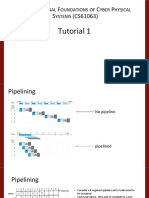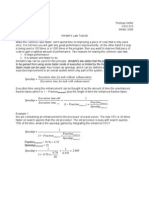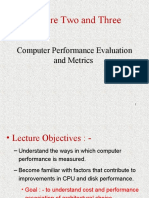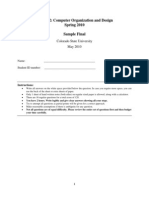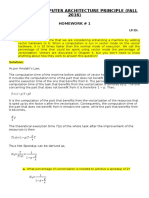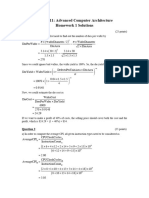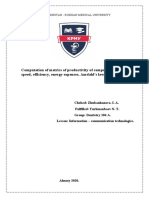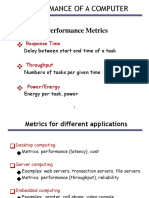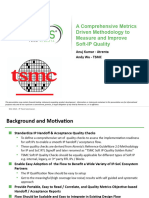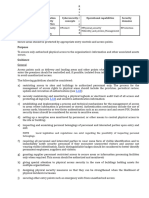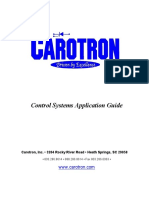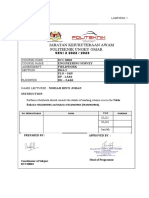0% found this document useful (0 votes)
43 views6 pagesCPU Performance Assignment
This document discusses several performance metrics related to CPUs, memory, and storage. It provides examples to calculate:
1. Speedup from improvements to integer, floating point, and branch performance using Amdahl's Law.
2. Effects on CPI from improved branch prediction rates and stall penalties.
3. Hit rate and effective access time for a memory system with caching.
4. Speedup from switching between HDD and SSD storage for different file sizes and numbers.
5. Probability of data loss for various RAID configurations with known single-disk failure rates.
Uploaded by
John WirthCopyright
© © All Rights Reserved
We take content rights seriously. If you suspect this is your content, claim it here.
Available Formats
Download as PDF, TXT or read online on Scribd
0% found this document useful (0 votes)
43 views6 pagesCPU Performance Assignment
This document discusses several performance metrics related to CPUs, memory, and storage. It provides examples to calculate:
1. Speedup from improvements to integer, floating point, and branch performance using Amdahl's Law.
2. Effects on CPI from improved branch prediction rates and stall penalties.
3. Hit rate and effective access time for a memory system with caching.
4. Speedup from switching between HDD and SSD storage for different file sizes and numbers.
5. Probability of data loss for various RAID configurations with known single-disk failure rates.
Uploaded by
John WirthCopyright
© © All Rights Reserved
We take content rights seriously. If you suspect this is your content, claim it here.
Available Formats
Download as PDF, TXT or read online on Scribd
/ 6



